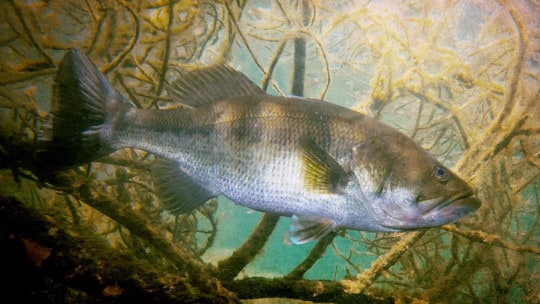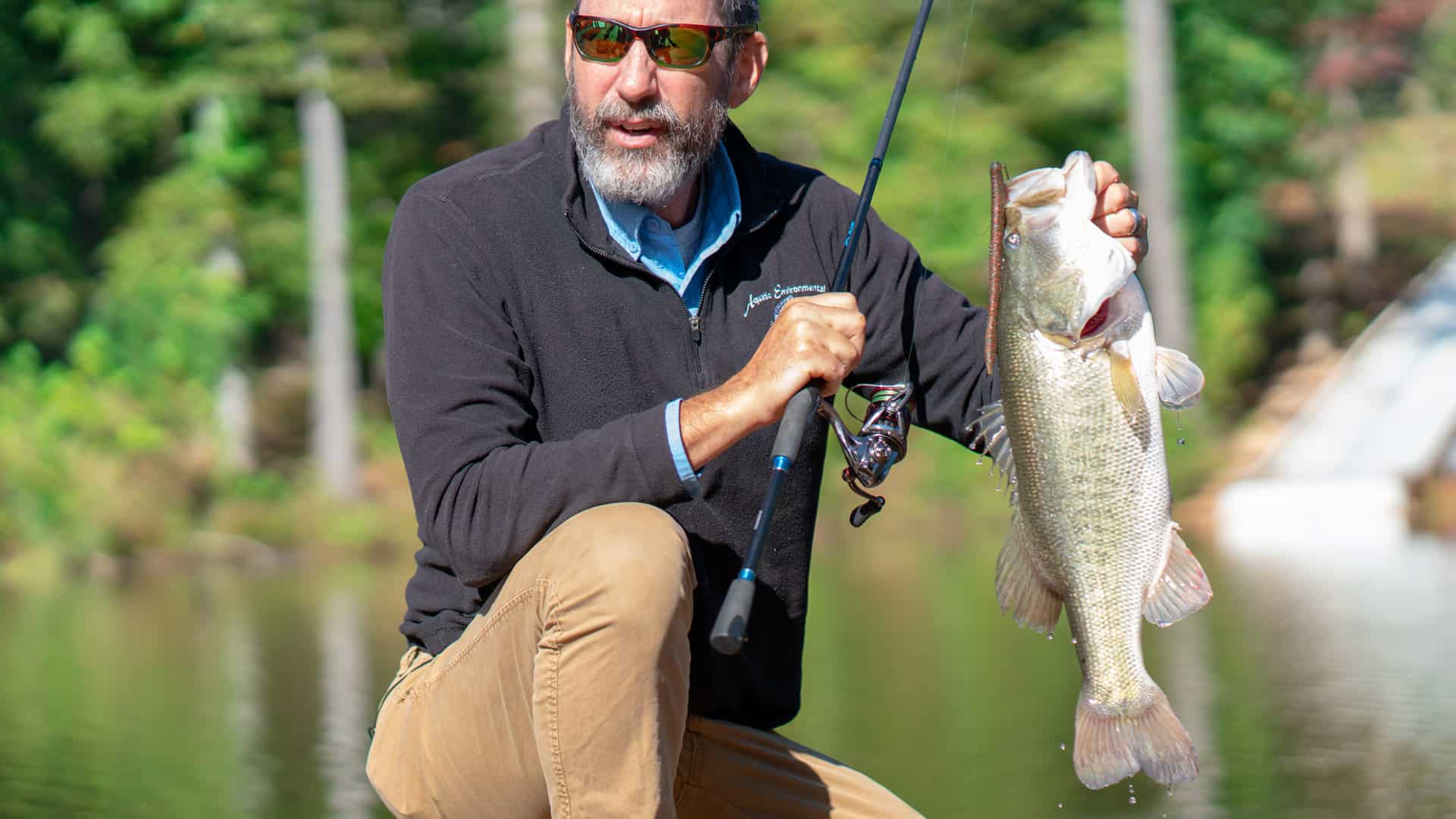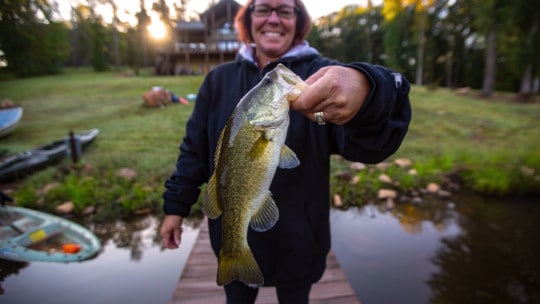
How to Stock a Pond for Trophy Bass
The beauty of having your own private pond is the opportunity to catch trophy bass in it. For that to happen, though, knowing how to stock a pond for trophy bass is necessary. Knowing what largemouth bass eat and how many bass per acre is the right ratio will lead to countless hours of fun for you and your family and friends.
To help you grow those trophy-size fish, Backyard Life and our friends at Purina consulted with Greg Grimes, founder of Aquatic Environmental Services. Greg has a Master’s in Fisheries Sciences, making him somewhat of a bass biologist (our words, not his).
In this premiere episode of Exmark’s Living Rural series, Greg breaks down the art of trophy-bass pond stocking:
- Typical Stocking Plan vs. the Stocking Plan Greg Recommends
- Supplemental Stocking Plan
- Forage Stocking Program
- Rainbows vs. Bluegills
Pond Stocking Plan Review
As Greg says, if you want to have nice, healthy bass, you better have plenty for them to eat. For years, the traditional stocking plan used by DNR (Department of Natural Resources) agencies has been a 10:1 ratio. For every 100 largemouth bass you stock, add 800 bluegills and 200 redear sunfish. While that’s a good balance, to grow trophy bass, you’ve got to think in terms of a trophy ratio when you stock a pond.
Greg recommends a ratio of 48:1, which gives the largemouth more to eat. Instead of starting with 100 bass, you’ll start with 50. Then, you’ll come in with 2,000 bluegills and 400 redear sunfish. Not only have you provided more food for your bass to eat, but you’ve also reduced the odds of your pond becoming bass crowded or bass dominant as quickly. This will result in wonderful growth throughout their lifespan. (Not so wonderful for the bluegills’ and sunfishes’ lifespans, but you get the point).
What to Feed Bass in a Pond
Supplemental stocking with fathead minnows is ideal for complementing those higher numbers of bluegill because they quickly build up their numbers. This takes the pressure off the bluegill, and a two-inch bass fingerling can fatten up on the minnows and begin to grow. Eventually, the minnows will be overtaken by the feasting bass, who will switch over and begin dining on the bluegill. Spoil those little guys!
The next allies in growing your trophy bass are crawfish and threadfin to build up a good forage source. Threadfin shad are ideal for ponds three acres and larger. They thrive best in the right environment—one that isn’t too far outside the Southeast mountain region.
Between the crawfish and shad, you’ve created a climate for superior bass growth throughout their lifespan. If you start to see the bluegill population go down, you need to offset that predation by stocking more bluegill, and that’s where a sound forage stocking program comes in.
Forage Stocking
May is an ideal time to build additional forage. Crawfish prices drop, and are much cheaper to stock by the pound than any other forage fish. Crawfish not only provide sustenance for the bass, but offer the added benefit of stimulating the bite—a nice side note and one that you’ll appreciate later when wetting a line.
In the summer months, the crawfish are attractive during pre-spawn and into spawning time. This is when the doldrums set in, so add another energy source and break up the summer malaise with some goldfish. While golden shiners are often recommended, Greg says goldfish are better. They’re visible and slower-moving, so bass can easily pick them off. Goldfish offer a bigger bang for the buck, providing the bass with a meatier bite. With the bass exerting less energy, it will lead to better growth rates.
As winter approaches, rainbow trout’s the call. Greg says there’s no better superfood. You can’t get a better source of nourishment for the bass than the trout. And, their size makes them preferable over bluegill at this point as their main diet.
Rainbows vs. Bluegills
Another key to growing trophy-size largemouth is what Greg refers to as “matching forage sizes.” Rainbow trout are half the length of largemouth at this age, compared to bluegill, which are a third of the length. For a 12-inch bass, you’re trying to push up, stocking these six- to eight-inch rainbows will increase the growth rates on the bigger bass. You can go even larger, stocking 10- to 12-inch trout. Again, your goal is superior largemouth bass growth throughout their lifespan.
Stock your pond Greg’s way from the beginning, add forage throughout the seasons, and be ready for a lot of grinning photos of your friends and family holding some beautiful trophy bass.
More Like This





